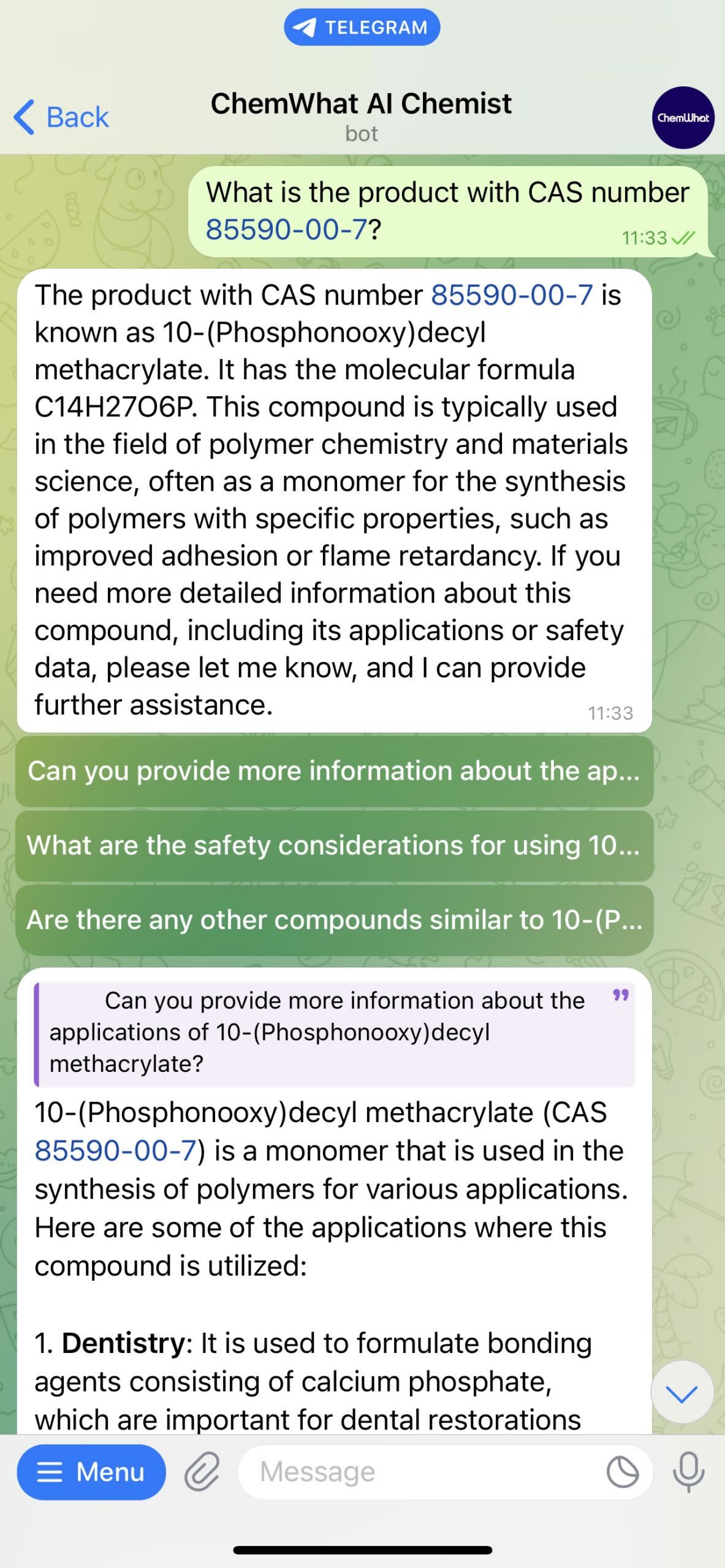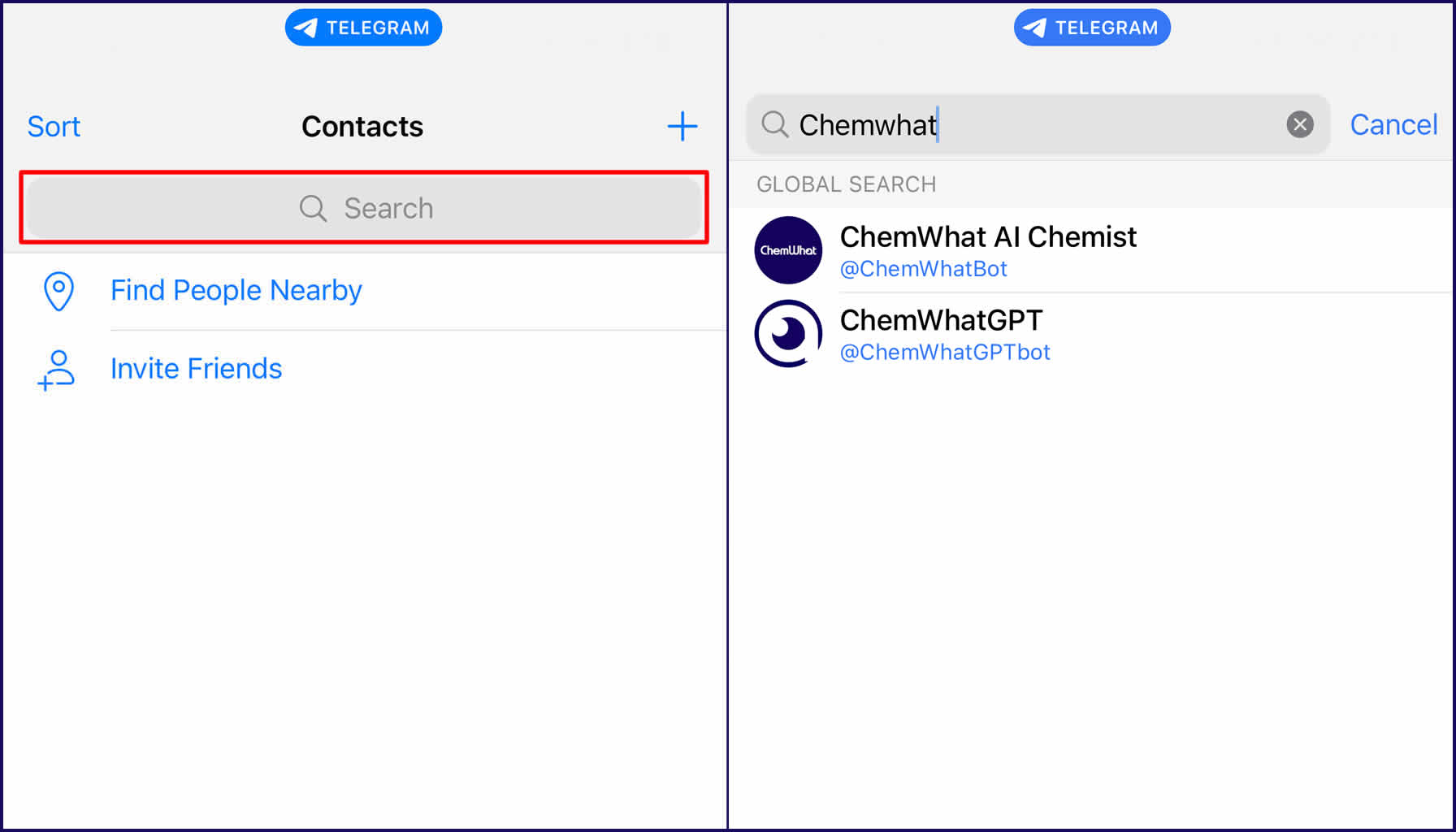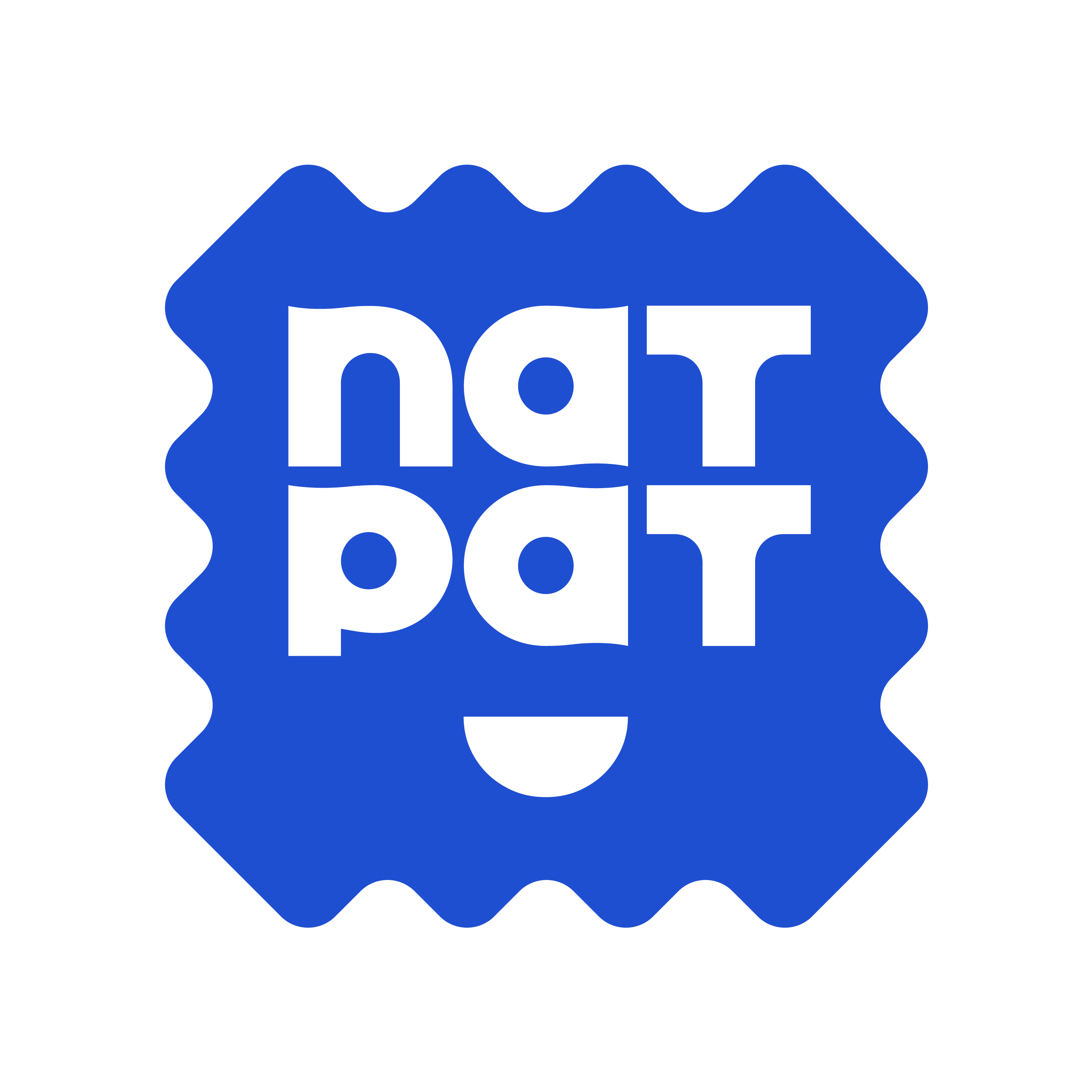
AI CHEMIST, POWERED BY CHEMWHAT, NOW ON TELEGRAM
Worldwide – May 11, 2024 (USANews.com) – In the field of drug development, artificial intelligence (AI) technology is becoming an indispensable tool for accelerating the discovery of new drugs. AI employs efficient algorithms to screen tens of thousands of compounds, predicting their pharmacological properties and potential side effects, which greatly optimizes the drug development process. For instance, deep learning models can accurately predict the biological activity of small molecules, significantly shortening the period from laboratory to clinical trials. Moreover, DeepMind’s AlphaFold system has achieved a technological breakthrough in protein structure prediction. Its ability to predict the three-dimensional structure of proteins is of great significance for understanding complex biological processes and disease mechanisms, promoting drug design, and advancing bioengineering.
In the field of chemistry, AI also demonstrates strong potential for application. Currently, AI can not only predict the outcomes of chemical reactions, but also determine the optimal pathways for synthesizing new compounds. This advancement involves using machine learning algorithms to optimize the steps in chemical synthesis, which not only reduces the workload in laboratories but also increases the success rate of chemical production.
Despite the significant achievements of artificial intelligence (AI) in cutting-edge research in biology and chemistry, ordinary practitioners, educators, students, and researchers still face challenges in accessing accurate and comprehensive biochemical information. Current widely used language models like ChatGPT, Claude and Gemini, although capable of handling a variety of information requests, still have limitations in accessing authoritative scientific databases and providing expert-level answers. These limitations significantly affect the practicality of these tools in educational and research fields.
ChemWhat Launches Groundbreaking AI Chemist
To address this issue, the development and launch of ChemWhat’s AI chemist represents a significant advancement in the field of chemistry. This platform is specifically designed to fill the gaps in professional chemical and biological information services provided by existing AI tools. By integrating authoritative database resources and advanced natural language processing technologies, it offers a precise and comprehensive query response system.
The launch of the ChemWhat AI Chemist has significant practical and strategic implications. First, it greatly enhances the effectiveness of educational tools, allowing teachers and students to instantly access the most accurate scientific data and explanations, which plays a crucial role in improving the quality of education and stimulating students’ interest in learning. Secondly, for researchers, this tool can accelerate the process of scientific research, helping researchers quickly verify hypotheses, analyze experimental data, and explore new research directions. Additionally, the ChemWhat AI Chemist also supports innovation in R&D, aiding practitioners in fields such as drug development and new materials research.
Comprehensive Chemical and Biological Information Services
The goal of the ChemWhat AI Chemist is not merely to integrate existing information, but to provide professionals in the fields of chemistry and biology with an unprecedented information service platform by combining the most advanced artificial intelligence model technologies with ChemWhat’s vast database and online resources. This platform aims to offer a one-stop solution that meets the diverse needs in scientific research, education, and industrial applications.
Specifically, the services provided by the ChemWhat AI Chemist include not only basic identification information for chemicals and bioproducts but also in-depth analyses of physical and chemical properties such as molecular structure, solubility, reactivity, and stability. Additionally, the platform offers detailed data on manufacturing processes, supporting practitioners in understanding raw material requirements, production workflows, quality control standards, and optimization of production efficiency.
Providing safety information is another important feature of the ChemWhat AI Chemist. Users can access safety guidelines for chemicals and bioproducts, emergency response measures, personal protective equipment requirements, and waste disposal recommendations. This information is crucial for ensuring the safe operation of laboratories, classrooms, and production facilities.
In terms of logistics and storage, the platform provides information on the optimal storage conditions, compatibility, and transportation regulations for various chemicals and bioproducts. This helps users mitigate risks during transportation and ensures the quality of the products.
Finally, ChemWhat Chemist AI also features an advanced question generation capability. This functionality enables the system to propose related questions based on user queries, thereby enhancing the depth and breadth of exploration within the chemical and biological fields. For instance, when a user asks about the reaction mechanism of a specific chemical, the AI might suggest further questions about potential side reactions, or its applications in industrial processes. This feature not only aids in educational purposes but also supports research by prompting users to consider various aspects of a problem, potentially uncovering new avenues for investigation and innovation.
Why choose the Telegram platform?
The choice to launch the ChemWhat AI Chemist on the Telegram platform is due to its excellent instant messaging capabilities and high level of security. Telegram’s API allows developers to build feature-rich bots, its user interface is straightforward and easy to operate, and encrypted communication ensures the security of exchanged data.

How to use ChemWhat’s AI Chemist ?
Using ChemWhat AI Chemist is very straightforward. Users simply need to register an account on Telegram, search for and start the “chemwhatbot”, and they can begin interacting (PC or Mac browsers can visit the homepage at ChemWhat Official Website to find the relevant link). For AI application needs beyond biology and chemistry, ChemWhat has also launched a Versatile AI assistant “chemwhatgptbot” with image recognition and image generation capabilities, also freely available on Telegram (PC or Mac browsers can click on the Versatile AI main force).

Looking to the future, as AI technology continues to evolve, the application potential of ChemWhat AI Chemist is enormous. In the future, the platform may integrate more advanced analytical tools, such as deep learning algorithms, to simulate chemical reactions and predict the properties of new compounds. By integrating with global scientific research networks, ChemWhat AI Chemist is expected to become an important tool for fostering global chemical research collaboration.
The launch of ChemWhat’s AI chemist, not only showcases the latest advancements in artificial intelligence technology but also brings unprecedented new opportunities to the fields of chemical education and research. The ongoing development and refinement of this platform signal a future where chemical learning and research will be more efficient and precise. As AI tools are increasingly integrated into scientific research and teaching, we can anticipate a more data-driven and intelligent research environment, which will greatly enhance the speed and quality of scientific research and push the boundaries of scientific innovation. The applications of
ChemWhat’s AI chemist are not limited to professional scientists and research institutions ; its widespread adoption will also benefit educators and students, enabling them easier access to and utilization of complex chemical knowledge and data, thereby nurturing the next generation of scientists. With further technological refinement and enhanced user experiences, the ChemWhat AI chemist is poised to become a major pillar of global chemical research and education.
###





.png?alt=media&token=e3d8feda-194a-4266-a7fe-d9c9692fc907)
